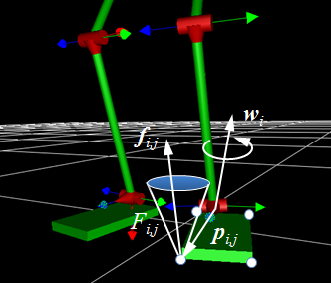Abstract

Having human-like motions will make humanoid robots more predictable and safer for the people around them. An effective way to realize this would be to use human motions as reference. Due to different kinematic and dynamic properties between humans and humanoid robots, however, a human motion could be physically infeasible for a robot and cause the robot to fall over. Therefore, it is necessary to modify and adapt an infeasible human motion to the robot. This paper presents a method for adapting human motions to humanoid robots based on a technique called time warping, which modifies the time line of a reference motion to speed up or slow down the motion. By doing this, the velocity and acceleration profiles of the motion are changed, and it is possible to turn an infeasible motion into a feasible one. The optimal time warping is obtained through a generalized motion feasibility index that quantifies the feasibility of a motion considering the friction and center-of-pressure constraints. Thanks to the generality of the index, the proposed motion adaptation method can be applied to motions on arbitrary terrains or number of links in contact with the environment. Through dynamics simulation, we demonstrate that the method facilitates the reproduction of human motions on a humanoid robot.
Additional Content
Copyright Notice
The documents contained in these directories are included by the contributing authors as a means to ensure timely dissemination of scholarly and technical work on a non-commercial basis. Copyright and all rights therein are maintained by the authors or by other copyright holders, notwithstanding that they have offered their works here electronically. It is understood that all persons copying this information will adhere to the terms and constraints invoked by each author’s copyright. These works may not be reposted without the explicit permission of the copyright holder.